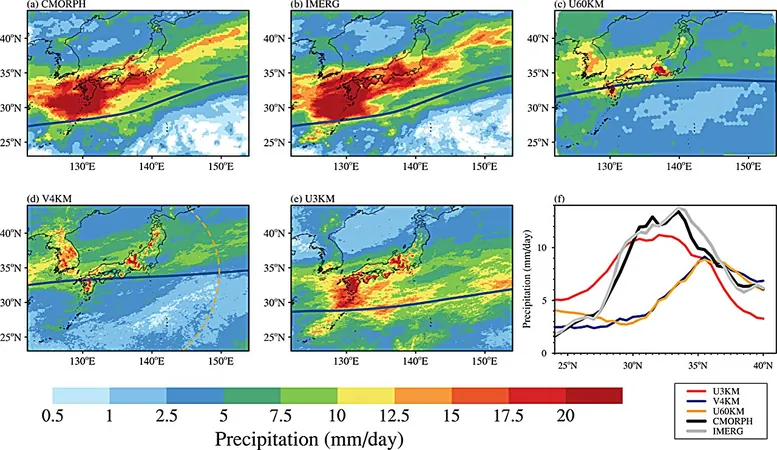
Breakthrough Model Predicts Plum Rain Events with Unmatched Accuracy!
2024-11-12
Author: Ming
Introduction
As summer approaches in East Asia, meteorologists are usually on high alert for the plum rain – a persistent rainfall phenomenon affecting areas from the middle and lower reaches of China's Yangtze River to Japan's Kyushu Island. This seasonal downpour is not just a weather pattern but a critical part of the local environment, capable of bringing life-sustaining moisture to the region.
The 2020 Plum Rain Challenge
However, in 2020, the plum rain presented a severe challenge when a record-breaking "violent plum rain" struck, wreaking havoc across both China and Japan. The consequences were devastating, impacting the daily lives and economic activities of countless residents. In light of such events, improving the precision of subseasonal forecasts has never been more critical.
Breakthrough Research
Recently, a research team, led by Professors Zhao Chun and An Hong from the University of Science and Technology of China (USTC), achieved a significant milestone in weather prediction. Utilizing a self-developed global convection-permitting model and the advanced capabilities of China's Sunway supercomputer, they conducted a one-month subseasonal forecast experiment that accurately predicted the rainband associated with the extensive plum rain events of 2020 in Japan. Their findings, published in "Environmental Research Letters," signal a potential shift in forecasting methods.
Enhanced Computational Model
The team previously engineered the Integrated Atmospheric Model Across Scales (iAMAS) optimized for the Sunway supercomputer's architecture. This optimization allowed them to overcome significant computational challenges, enhancing speed and efficiency regarding massive data processing. As a result, they were able to produce monthly forecasts with an incredible resolution of 3 kilometers.
Key Findings
In a groundbreaking study, they evaluated the predictability of the 2020 plum rain by running forecasts with different resolutions. Notably, their findings revealed a significant northward shift in the predicted rainband when employing a lower-resolution global forecast of 60 kilometers. This anomaly persisted, even when they refined the model to a convection-permitting resolution.
Impact of Coarser Resolutions
Further investigations indicated that at these coarser resolutions, the Western North Pacific Subtropical High (WNPSH) expanded, leading to the northward displacement of the rainband and ultimately diminishing its intensity. Importantly, the newly developed global convection-permitting model demonstrated an impressive capability to capture deep convection in the equatorial region. It effectively simulated the rainfall processes and circulation patterns in the Western Pacific, aligning closely with observational data.
Implications and Future Prospects
This innovative approach promises a new frontier in weather prediction, thereby potentially transforming how East Asia, particularly regions vulnerable to extreme rainfall events, prepares and responds to flooding threats. As researchers continue to refine these models, the future holds hope for increasingly reliable forecasts, reshaping disaster readiness in the affected areas.
Conclusion
Stay tuned as we delve deeper into the implications of this research and how it could change the landscape of meteorological science forever!



 Brasil (PT)
Brasil (PT)
 Canada (EN)
Canada (EN)
 Chile (ES)
Chile (ES)
 España (ES)
España (ES)
 France (FR)
France (FR)
 Hong Kong (EN)
Hong Kong (EN)
 Italia (IT)
Italia (IT)
 日本 (JA)
日本 (JA)
 Magyarország (HU)
Magyarország (HU)
 Norge (NO)
Norge (NO)
 Polska (PL)
Polska (PL)
 Schweiz (DE)
Schweiz (DE)
 Singapore (EN)
Singapore (EN)
 Sverige (SV)
Sverige (SV)
 Suomi (FI)
Suomi (FI)
 Türkiye (TR)
Türkiye (TR)